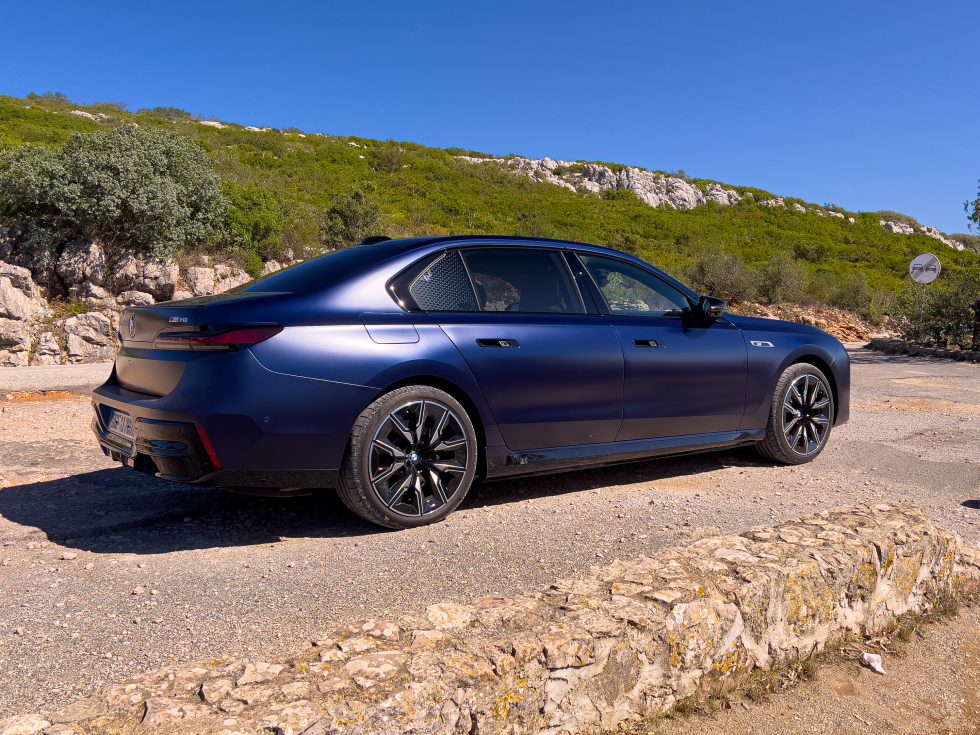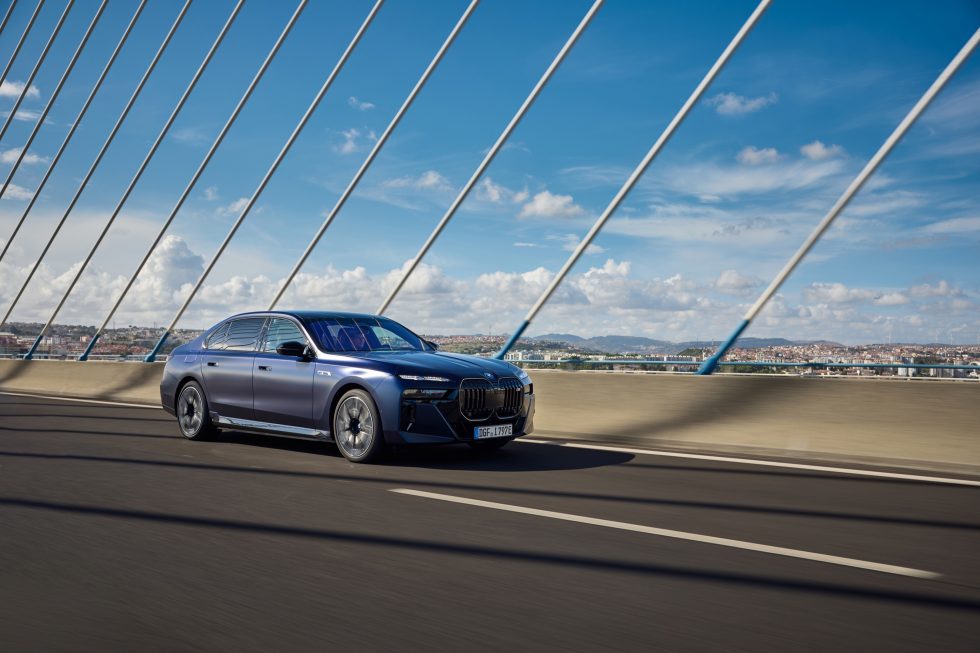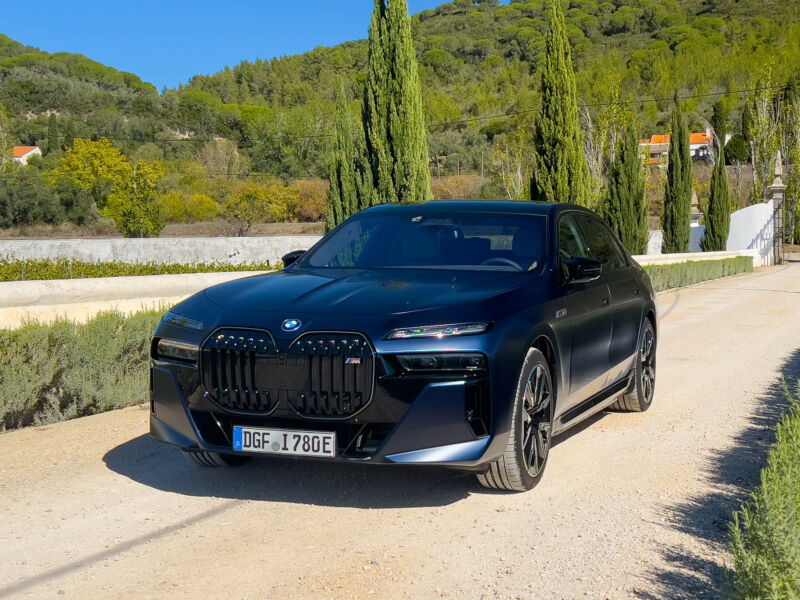Jonathan Gitlin
LISBON, PORTUGAL—Driving BMW’s new electric 7 Series was one of the true automotive surprises of 2022. The automaker rolled out electric and combustion-tech versions at the same time, with the electric i7 bettering the gas-burning 760i in just about every way. Now, BMW has sent its biggest and boldest EV off to its M division, the in-house tuning and motorsport people. The resulting car is the fastest-accelerating and most expensive electric BMW to date.
I’ve long been an advocate for putting electric motors in luxury cars, especially big ones—the combination of instant torque and near-silence is ideal for that application. Automakers both new and established also like the idea of big, luxury EVs because they can charge plenty for the privilege, so it’s a crowded field. Some cars in this class target rollercoaster-like acceleration; for example, Porsche, Tesla, and Lucid will each sell you a four-door EV capable of a 0–60 time that’s around two seconds.
The i7 M70 is not as fast as those EVs, and it’s not the kind of luxury EV you might use to wipe the smiles off some faces at the local drag strip’s “run what ya brung” night. Instead, in keeping with BMW’s old “ultimate driving machine” slogan, it’s a rather engaging driver’s car, one that belies its size and mass remarkably well.

Jonathan Gitlin
The people at M have kept the i7’s front motor unchanged—it puts out 255 hp (190 kW) and 296 lb-ft (401 Nm). And the battery has the same useable 101.7 kWh (105.7 kWh gross) capacity. But there’s a more powerful rear drive unit that includes a six-phase dual inverter and a longer rotor that increases power and torque at the rear axle to 483 hp (360 kW) and 479 lb-ft (650 Nm).
Maximum combined power and torque is, as ever, a function of how much energy the battery can supply to both motors at once—in this case, 650 hp (485 kW) and 784 lb-ft (1,062 Nm) at a curb weight of 5,929 lbs (2,689 kg).
That’s not an inconsiderable amount—it’s 770 lbs (345 kg) more than the V8 7 Series. But from the driver’s seat, it doesn’t register as a car that has anything like that mass. Some of that is obviously the powerful electric powertrain, which will get you from 0 to 62 mph (100 km/h) in 3.7 seconds, shaving 0.8 seconds off the less powerful i7’s time. Top speed is limited to 155 mph (250 km/h).

BMW
But the way it hides its mass is more than the quick response from the throttle pedal to the wheels. Modern air suspension is amazingly good at its job, and the i7 M70 features new M tuning for how those air springs react. The cheaper, less powerful i7 was already an enjoyable car to drive, but now it feels tauter—in addition to active antiroll bars and M-tuned suspension, there’s also more chassis stiffening.
A big car like the i7 M70 is at its best munching miles on open highways. Even in Sport mode, it felt like an effortless car in that setting. The electrically excited motors offer no resistance when they’re not being powered, so it’s simple to maintain a cruising pace with just small applications of throttle between long phases of coasting; the drag coefficient of 0.23 also helps a lot in this regard.
If you feel the need for a bit more speed, a paddle behind the left spoke of the steering wheel engages a 10-second boost mode that increases maximum torque to 811 lb-ft (1,100 Nm)—you know, for leaving toll booths. Opinions were divided when it came to the Hans Zimmer-composed sounds that accompany acceleration in Sport mode—file me in the camp that quite liked this subtle addition of some aural drama.

BMW
Since our drive route was not a loop, I can’t offer any meaningful insights into actual energy consumption based on our first drive. But BMW says it expects an EPA range of 295 miles, which works out to 2.9 miles/kWh (21.4 kWh/100 km).
Credit: Source link
